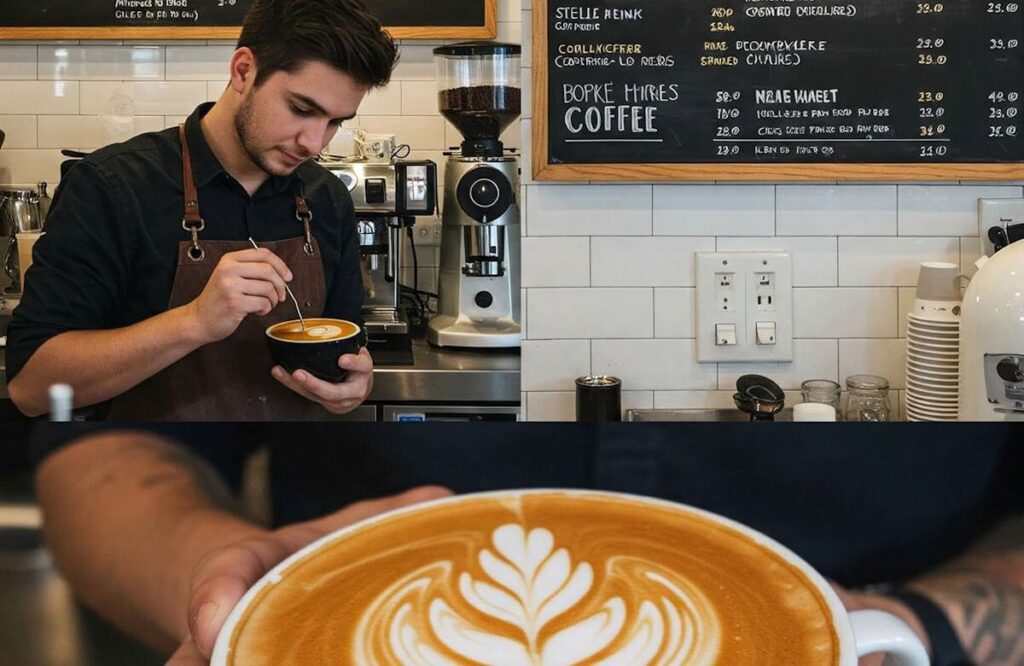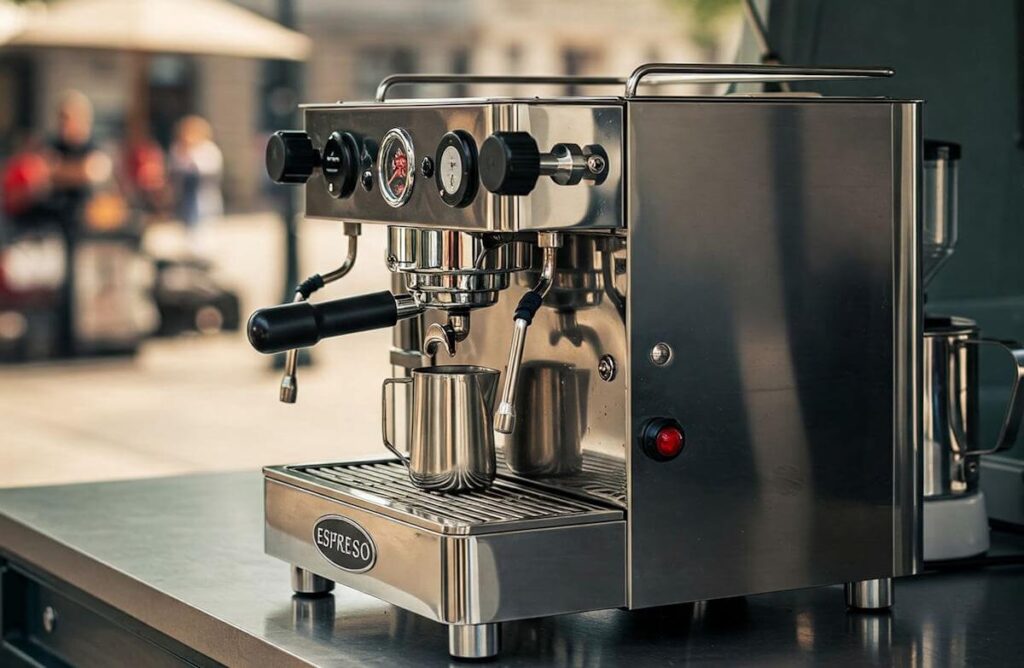Introduction to Coffee Pricing
Pricing is a critical component of any business strategy, particularly in the competitive coffee industry. Setting the right price for coffee products can significantly impact profitability, helping businesses to succeed in a market where consumer preferences and economic factors are constantly evolving. Proper pricing takes into account various elements, including production costs, market trends, and customer perceptions, which collectively impact how consumers value a coffee product.
Understanding the costs associated with coffee production is the first step in establishing a pricing strategy. Variables such as sourcing beans, processing, roasting, packaging, and distribution all contribute to the overall cost structure. Additionally, operational expenses like labor, rent, and marketing must be factored in to ensure that the price not only covers costs but also generates profit. A comprehensive grasp of these factors helps coffee retailers to set prices that reflect the true value of their products, thereby enhancing profitability.
Moreover, market positioning is vital when pricing coffee. Different segments of the coffee market cater to various consumer demographics with diverse preferences and spending habits. For instance, specialty coffee may command a premium price due to its unique sourcing and quality. Conversely, mainstream brands might benefit from a more competitive price point to attract price-sensitive customers. Identifying where your product fits within this spectrum can help in determining an optimal pricing strategy.
Customer perception also plays a significant role in pricing. Consumers often associate price with quality; therefore, understanding how customers perceive your coffee can aid in setting prices that are justified by the value offered. Conducting market research to gauge customer expectations can provide valuable insights, ultimately guiding businesses in setting prices that resonate with their target audience.
Understanding Your Costs
In the process of pricing your coffee effectively, a comprehensive understanding of all associated costs is paramount. The expenses incurred when running a coffee business can be broadly categorized into direct and indirect costs. Direct costs are those that are explicitly tied to the production of coffee and its immediate sale, including expenditures for coffee beans and supplies such as milk, sugar, and cups. It is crucial to maintain precise records of these costs, as they form the foundation on which your pricing strategy will be built.
Beans, which are arguably the most significant part of your product, come in various grades and forms, influencing both quality and price. Additionally, factors such as seasonal fluctuations and sourcing methods can impact your overall cost for coffee beans. Supplies, such as cups and napkins, also contribute to the direct costs and must be incorporated when determining the cost of goods sold.
On the other hand, indirect costs are those overhead expenses that support the business but do not directly correlate with the coffee production process. These include rent for your physical location, utility bills—such as electricity and water—and labor costs, which encompass wages for your baristas and other staff. These indirect costs can significantly affect your overall budgeting and must be calculated on a per-cup basis to ensure an accurate assessment of profitability.
Understanding both direct and indirect costs allows you to develop a more nuanced pricing strategy. By factoring in all expenses, you can ascertain the minimum price at which you can sell your coffee while still achieving profitability. Thus, a thorough analysis of both cost categories is crucial for establishing a successful coffee business.
Analyzing the Market
Understanding the market is a fundamental step in pricing your coffee product effectively. Conducting thorough market research can illuminate current pricing trends within the coffee industry and provide insight into how to position your brand competitively. Start by exploring industry reports, which can offer invaluable data on market trends, consumer behavior, and economic factors affecting coffee prices. These reports can often highlight several key players in the market, allowing you to gauge a benchmark for pricing.
Additionally, analyzing competitor prices is crucial. Visit local coffee shops, cafes, and online retailers to evaluate how much they charge for similar products. Observe differences in pricing strategies, such as premium branding versus value pricing, and assess their effect on customer engagement and sales. Knowing your competitors’ prices can guide you in establishing a competitive yet profitable price point for your offerings.
Beyond external competition, understanding your target customer is equally important. Delve into customer demographics and preferences to gauge what your potential consumers value most. Surveys, social media analyses, and consumer feedback can provide useful insights into purchasing habits and price sensitivity among different demographic groups. This knowledge will help you tailor your pricing strategy to meet the expectations and budget constraints of your target audience.
Another vital element to consider is the economic environment. Factors such as coffee bean prices, shipping costs, and overall inflation can significantly influence your pricing decisions. Staying informed about these external conditions allows you to adjust your prices more strategically, ensuring that they remain competitive while still meeting your profit margins. By performing comprehensive market analysis, businesses can develop a well-informed pricing strategy that supports sustained profitability in the coffee sector.
Determining Your Profit Margin
Determining the profit margin is a crucial aspect of pricing your coffee effectively. A profit margin can be defined as the difference between the cost of producing your coffee and its selling price, expressed as a percentage of the selling price. This metric is essential for assessing the financial health and sustainability of your coffee business. By understanding your profit margin, you can strategize pricing, control costs, and ultimately, ensure profitability.
When establishing your desired profit margin, first consider the various factors that influence it. Product quality is paramount; higher-quality coffee typically demands a higher price, which can lead to a greater profit margin if costs are controlled. Customer demand also significantly impacts pricing strategies; if customers are willing to pay more for unique or premium offerings, this can enhance your profit margins. Additionally, operational efficiency plays an important role; streamlining processes can reduce costs and increase margins.
To calculate your desired profit margin, begin by determining your total costs, including raw materials, labor, and overhead expenses. Once you have this information, decide on a selling price that reflects not only these costs but also the perceived value of your coffee in the market. A commonly recommended approach is to establish a profit margin that falls between 20% and 50%, depending on regional market conditions and competition. It’s vital to remain adaptable; as inputs and market dynamics shift, regularly reassessing your profit margin will help maintain financial viability.
In conclusion, understanding and determining your profit margin is essential for pricing your coffee appropriately. Doing so will help you balance profitability with customer satisfaction while ensuring the sustainability of your business in a competitive marketplace.
Creating a Pricing Strategy
Developing a robust pricing strategy is crucial for any coffee business aiming to secure profitability while appealing to its target market. The selected pricing method can significantly influence both customer perception and overall sales. Three prominent pricing strategies include cost-plus pricing, value-based pricing, and competitive pricing.
Cost-plus pricing involves calculating the total cost of producing the coffee, including the raw materials, labor, and overhead, and then adding a predetermined profit margin. This straightforward approach ensures that all costs are covered while generating a consistent profit. It is particularly effective for businesses looking to maintain control over their expenses, yet it may not fully capture the perceived value of the product in the eyes of customers.
Value-based pricing, on the other hand, focuses on the perceived value of the coffee from the customer’s perspective. This strategy seeks to match the price with what customers are willing to pay, based on factors such as quality, brand reputation, and unique selling propositions. Businesses employing value-based pricing should conduct thorough market research to understand customer preferences and willingness to pay, potentially enabling them to command higher prices for premium products.
Competitive pricing involves setting prices based on those of competing coffee businesses. This strategy requires a keen understanding of the market landscape, allowing businesses to either align their prices closely with competitors or slightly differentiate their offerings through strategic pricing adjustments. While competitive pricing can help attract price-sensitive customers, it may also lead to reduced profit margins if not carefully managed.
To ensure the chosen pricing strategy aligns with broader business goals, operators must continually assess their market position and adjust their pricing accordingly. A well-aligned pricing strategy not only enhances profitability but also fosters customer loyalty, ensuring sustainable growth in a competitive industry.
Considerations for Premium Pricing
In the competitive landscape of the coffee industry, establishing a premium pricing strategy for specialty coffees can significantly enhance profitability while positioning the brand as a leader in quality. Premium pricing reflects the added value consumers perceive in high-quality products, and several factors contribute to justifying this elevated price point.
Firstly, the sourcing of high-quality beans is paramount. Specialty coffee often originates from specific regions known for their unique agricultural practices, which can result in exceptional flavor profiles. By offering coffee beans that are sourced from renowned estates or single-origin farms, businesses can command higher prices due to the rarity and quality of the product. Furthermore, engaging in fair trade and sustainable practices can appeal to ethically-minded consumers, consequently enhancing the brand’s reputation and justifying a premium price.
Moreover, unique brewing methods can also play a significant role in differentiating a brand’s offering. Introducing innovative preparation techniques, such as pour-over, siphon brewing, or nitro cold brew, not only elevates the coffee drinking experience but also positions the business as a trendsetter in the market. This differentiation allows brands to create a niche, thereby commanding higher price points in comparison to standard coffee offerings.
In addition to the product itself, exceptional customer service is critical when adopting a premium pricing model. Building strong relationships with customers through personalized service and expert recommendations can enhance the overall experience, making consumers feel valued. This emotional attachment can further support customers’ willingness to pay more for a perceived superior product.
The impact on brand image should not be underestimated. A commitment to quality and premium pricing can elevate a brand, aligning it with craftsmanship and exclusivity. By effectively communicating this narrative, businesses can cultivate a loyal customer base that appreciates and seeks out high-quality specialty coffee, ultimately contributing to enhanced profitability.
Adjusting Prices Over Time
In the coffee business, pricing is not a one-time decision; it requires continuous evaluation and adjustment to ensure profitability. Changes in costs, market conditions, and consumer behavior can all necessitate a reexamination of your pricing strategy. Periodic adjustments can help maintain your margins and ultimately your business viability. One of the most common reasons to adjust coffee prices is the fluctuation in wholesale coffee prices, often influenced by factors such as weather conditions, crop yields, and international trade policies. For instance, a poor harvest can drive up prices, prompting a need for adjustments in retail pricing.
Market conditions are another significant factor. If your competition adjusts their prices, it is crucial to determine whether a price increase or decrease is warranted. Understanding your position in the market will inform these decisions. Additionally, consumer feedback plays a vital role in pricing adjustments. Engaging with your customers can provide insights into their price sensitivity and willingness to pay. Incorporating their feedback can help you adjust your prices in a manner that retains customer loyalty while also promoting profitability.
When it comes time to communicate these changes to customers, sensitivity and transparency are key. Crafting a message that explains the rationale behind price adjustments can foster understanding. Consider using various marketing channels—such as email newsletters, social media, or in-store signage—to inform your clientele. It’s also beneficial to highlight any improvements in product quality, sourcing practices, or sustainability efforts associated with the new prices. By approaching price adjustments thoughtfully and strategically, you can maintain trust with your customers while ensuring your coffee business remains profitable over time.
Promotions and Discounts
Promotional pricing and discounts can serve as vital strategies for drawing in customers and boosting sales in the competitive coffee market. When used judiciously, these tactics attract customers while upholding the perceived value of the product. The key lies in implementing them in a way that cultivates loyalty and encourages repeat business without undercutting profitability.
One effective strategy is the introduction of loyalty programs, which reward customers for their repeat purchases. Customers are more likely to return when they feel their loyalty is recognized and rewarded. A points-based system can encourage frequency of visits; for instance, offering a free beverage after a certain number of purchases not only fosters customer retention but also enhances their overall coffee experience. This approach creates a scenario where the initial discount does not reduce perceived value, as the reward enhances the customer’s relationship with the brand.
Seasonal discounts also play a critical role in promotional strategies. Offering discounts during holidays or specific seasons can create a sense of urgency and attract new customers looking for a suitable gift or indulgence. Limited-time offers, such as a discount on pumpkin spice lattes in the fall, keep the menu fresh and exciting. However, it is essential to assess the profit margins carefully to ensure that the discount does not erode the overall profitability of the product. Packaging these seasonal offerings effectively through targeted marketing campaigns can further amplify demand, making the discounts not just a cost but an investment in customer engagement.
Ultimately, implementing promotions and discounts should be a balanced approach, aimed at enhancing customer experience while preserving the essence and profitability of the coffee business.
Conclusion and Key Takeaways
In the competitive world of coffee, pricing your products effectively is crucial for achieving profitability. This guide has provided an in-depth look into various strategies and methodologies that can be employed to establish the most appropriate pricing structure for your coffee offerings. Throughout this post, we have emphasized the importance of understanding your costs, including raw materials, labor, and overhead, which form the baseline of your pricing strategy.
One of the key insights highlighted is the need for market research. By analyzing your competitors and understanding consumer behavior, you can develop a pricing model that not only covers your costs but also positions your brand favorably within the market. Notably, considering factors such as target demographics and their willingness to pay can help refine your pricing approach. Additionally, the balance between quality perception and price is vital; premium pricing can often convey higher quality but must be backed by exceptional product offerings.
Another important aspect discussed is the incorporation of different pricing strategies, such as psychological pricing or bundle pricing, which can enhance sales. In conjunction with this, utilizing pricing tiers for various products can attract diverse customer segments while maximizing revenue potential. It’s also essential to continuously monitor and adjust your prices in response to market fluctuations and changes in consumer demand.
The use of these best practices and insights will enable coffee entrepreneurs to price their products confidently. By applying a balanced approach and reflecting on the key takeaways presented in this guide, you can set a competitive price that ensures profitability while appealing to your target market. Engaging effectively with both cost considerations and customer preferences will ultimately lead to a successful pricing strategy for your coffee business.




